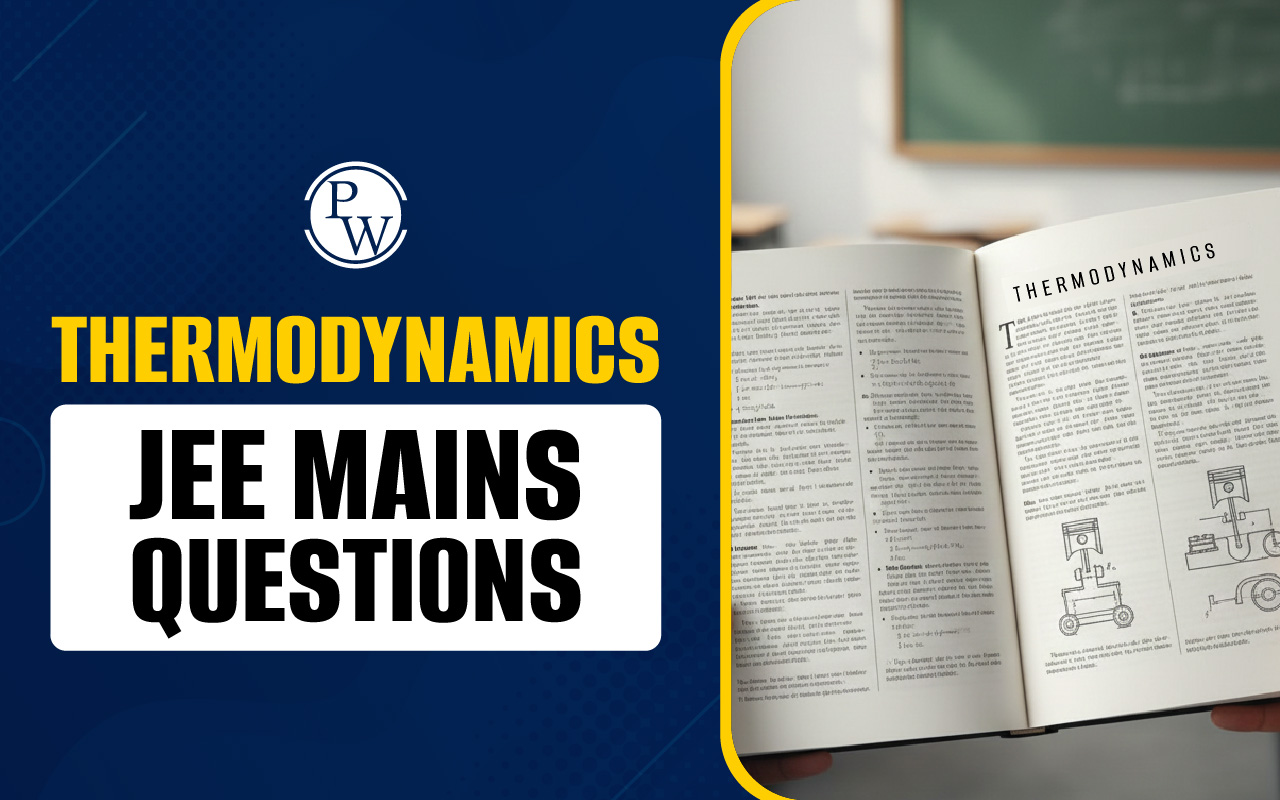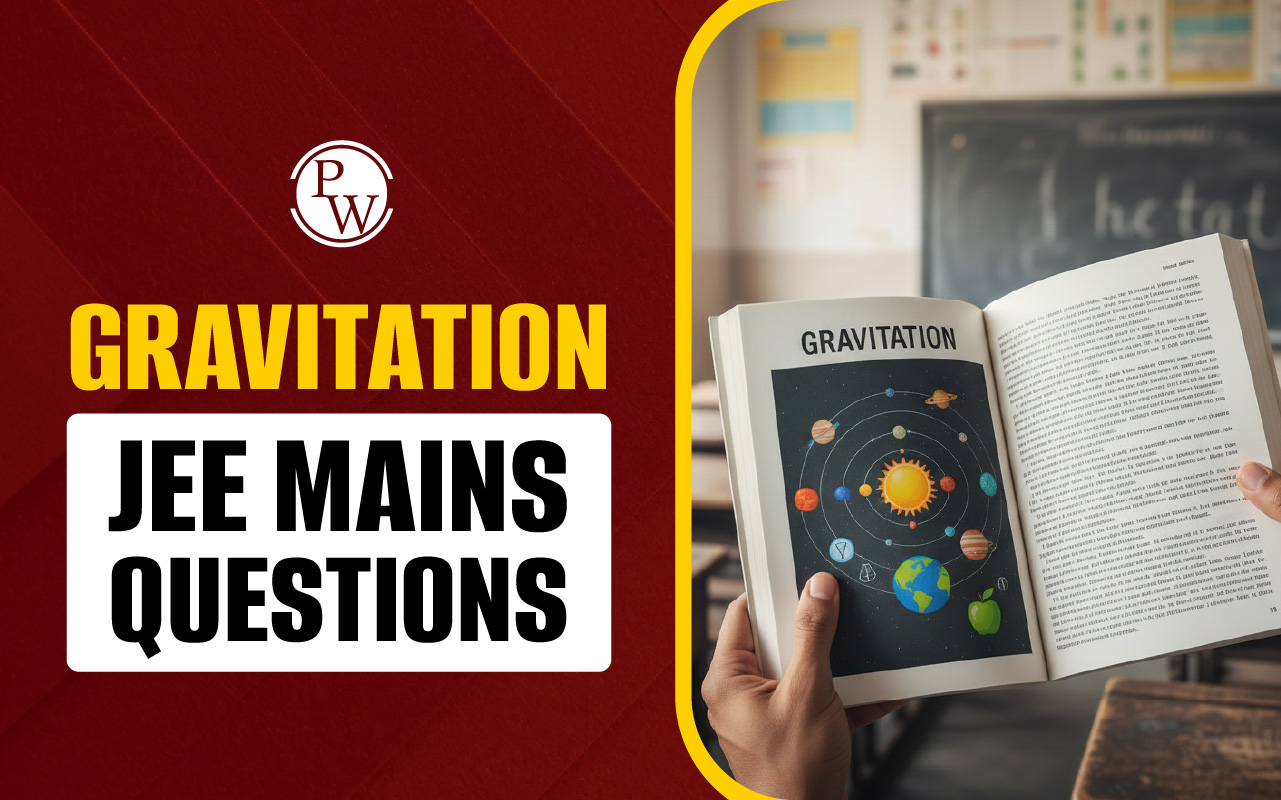
Normalization In JEE 2025 : Normalization in JEE 2025: JEE 2025 exam is conducted in multiple days and shifts. The difficulty level of the question paper is different in each shift. To equalize the level of difficulty in JEE 2025 exam, NTA follow a process which is called the Normalization in JEE 2025. Candidates have to appear in JEE Main 2025 exam and qualify within the top 2,50,000 students to get selected for JEE Advanced 2025 exam.
As the anticipation for JEE 2025 builds, it's crucial to understand the process of normalization in JEE 2025. If you want to score 90 percentile in JEE 2025 , then you must understand the normalization process in detail. In this article, we’ll talk about normalization in JEE 2025 , normalization process, score calculation, and more!What Is Normalization In JEE 2025?
Normalization in JEE 2025 is a statistical procedure aimed at ensuring fairness in comparing the performances of candidates across multiple sessions and shifts. The examination is conducted on different days and in various shifts, and there can be variations in the difficulty levels of different sets of question papers. normalization seeks to address these variations and provide a level playing field for all candidates. Understanding the intricacies of normalization involves recognizing that the raw scores of candidates might not directly reflect their actual performance due to differences in the difficulty levels of question papers. Therefore, normalization adjusts for these differences to ensure that no candidate is disadvantaged or advantaged based on the set of questions they received.How is Normalization Done by NTA?
NTA plays a pivotal role in the normalization process. The agency employs a robust statistical methodology to equate scores across different sessions. Several factors are considered during this process, including the difficulty level of the question papers and the performance of candidates in each session. The normalization formula takes into account the distribution of scores in different sessions. If a particular session's question paper is deemed more difficult based on the performance of candidates, the normalization process compensates for this by assigning higher normalised scores to candidates who appeared in that session.Importance of Normalization Procedure
The normalization procedure holds paramount importance in maintaining the integrity and fairness of the JEE examination. Several key aspects highlight its significance:- Fairness: normalization ensures that the competition is fair for all candidates, regardless of the session or shift they appear for. It eliminates the bias introduced by variations in the difficulty levels of question papers.
- Equity: By normalising scores, NTA aims to provide an equal opportunity to all candidates, regardless of the circumstances of their particular examination session.
- Consistency: normalization promotes consistency in evaluating candidates, as it standardise the scores to account for differences in question paper difficulty.
How Are Scores Calculated After Normalisation?
The process of calculating scores post-normalization is a crucial step in the Joint Entrance Examination (JEE) evaluation, and it involves a nuanced statistical approach. The National Testing Agency (NTA) employs a normalization formula that takes into consideration the mean and standard deviation of the raw scores obtained by candidates in different sessions.Percentile Scores
Before delving into the normalization process, it's essential to understand the role of percentile scores. NTA uses percentile scores to rank candidates relative to others. The percentile score indicates the percentage of candidates who scored equal to or below a particular candidate. Percentiles provide a more robust measure than raw scores alone, as they account for the distribution of scores in a given session.Normalization Formula
The core of the normalization process lies in a formula that adjusts raw scores to a common scale, accounting for the variations in difficulty levels across different sessions. While the specifics of the formula may vary, a simplified version can be represented as: Normalized Score = Candidate′s Percentile Score − Mean Percentile Score of the Session/ Standard Deviation of Percentile Scores in the Session × 100 + 50 In this formula:- Candidate's Raw Score: The actual score obtained by the candidate in the exam.
- Mean Raw Score of the Session: The average raw score of all candidates in the same session.
- Standard Deviation of Raw Scores in the Session: A measure of the spread of scores around the mean.
Normalization Process Impact on Scores
The normalization process aims to address the variability in question paper difficulty across different sessions. If a candidate appeared in a session with a more challenging paper, their raw score might be lower compared to another candidate in a session with an easier paper. normalization adjusts for this by assigning higher normalized scores to candidates who performed well in sessions with more challenging questions.Normalized Scores Reflect Relative Performance
Normalized scores reflect the relative performance of candidates within their respective sessions. A candidate with a high normalised score has outperformed their peers in the same session, irrespective of the absolute raw score. This relative approach ensures that candidates are evaluated based on their performance relative to others facing similar challenges.Normalization Process Ensuring Fairness
The ultimate goal of this normalization process is to ensure fairness and equity in the evaluation. By standardizing scores across sessions, NTA aims to eliminate any biases introduced by variations in question paper difficulty. This process levels the playing field, offering every candidate an equal opportunity to showcase their capabilities regardless of the challenges posed by the specific session they attended.Quality of Data
The effectiveness of normalization is contingent on the quality and quantity of data available. A robust dataset, encompassing a diverse range of candidate performances, enhances the accuracy of the normalization process. Limited data may introduce uncertainties and impact the precision of the normalization formula.JEE Main Normalization Procedure
The JEE Main normalization procedure is a meticulous and systematic approach employed by the National Testing Agency (NTA) to standardize scores across different sessions, ensuring a fair and level playing field for all candidates. This process is crucial due to the variations in the difficulty levels of question papers conducted in multiple sessions and shifts.Normalization Process In JEE Main Depends on Percentile
The normalization procedure in JEE Main primarily relies on percentile scores. Percentiles represent a candidate's relative performance compared to others. NTA calculates the percentile score for each candidate based on their raw scores in a specific session. This percentile score is a crucial factor in determining a candidate's rank and subsequently contributes to the normalization process.Calculation of Percentile Scores
NTA calculates the percentile scores by considering the number of candidates who scored equal to or less than the candidate in a particular session. This percentile score is indicative of the candidate's performance relative to others in the same session. The use of percentile scores, rather than raw scores, helps in eliminating the impact of variations in question paper difficulty.Normalization Across Sessions
After obtaining the percentile scores for each candidate in their respective sessions, NTA proceeds to normalise these scores. The process involves equating the percentiles across different sessions to account for differences in the difficulty levels of the question papers. For example, if a session has a more challenging set of questions, the normalization process adjusts the percentiles upwards to reflect the relative difficulty.Determining Normalized Scores
The normalization formula considers the mean and standard deviation of the raw scores in each session. These session-specific statistics play a crucial role in calculating the normalized scores. The formula is designed to ensure that candidates who appeared in sessions with more challenging question papers receive appropriately adjusted normalized scores, reflecting their relative performance.Normalization Window
NTA defines a normalization window to ensure that the percentile scores and subsequently the normalised scores are calculated with precision. The window typically includes a range of scores, and percentiles falling within this range are normalised using the same mean and standard deviation values.Final Normalized Scores
The culmination of the normalization process results in the assignment of final normalized scores to each candidate. These scores effectively reflect the candidate's performance across sessions, compensating for any variations in the difficulty levels of the question papers. The normalized scores serve as the basis for determining the overall rankings and, subsequently, the selection process for various engineering institutions.How Do You Calculate Normalized NTA Score for JEE 2025?
Calculating the normalized NTA score involves understanding the normalization formula. While the specific formula may vary, it generally includes the mean and standard deviation of the raw scores in different sessions.Challenges of normalization 2025
While normalization is designed to ensure fairness, it is not without its share of challenges and criticisms. Some common concerns include:- Subjectivity : The determination of question paper difficulty is subjective, and variations in the perception of difficulty can affect the normalization process.
- Limited Data : The effectiveness of normalization depends on a robust dataset. In cases where the dataset is limited, the accuracy of the normalization process may be compromised.
- Public Perception : Some candidates and stakeholders may question the transparency of the normalization process, leading to scepticism about the fairness of the results.
Tips for Scoring High in JEE 2025
Candidates who are willing to appear in JEE 2025 exam and have started their preparation for the exam can follow the below preparation tips to score high in the exam. These tips are very helpful for JEE preparation.- Understand the Syllabus : Get a copy of the JEE Main syllabus for Physics, Chemistry, and Mathematics. Break it down into smaller topics. This way, you can keep track of what you need to study and make sure you cover everything.
- Create a Study Plan : Make a study timetable that shows what you will study each day. For example, you could study Physics on Mondays and Wednesdays, and Chemistry on Tuesdays and Thursdays. Stick to this plan to stay organized and focused.
- Focus on NCERT Books : Start with NCERT textbooks, especially for Chemistry, because many JEE questions are based on these. Read the chapters carefully and understand the main ideas. Take notes as you go along, which will help you remember important points.
- Practice Regularly : Solve past years’ question papers and take mock tests to get used to the exam format. This helps you see the types of questions that might come up. Try timing yourself when you practice, so you learn to manage your time during the exam.
- Strengthen Your Concepts : Instead of just memorizing formulas, focus on understanding the ideas behind them. For instance, in Physics, learn how different laws work in real life. This understanding will help you solve tricky questions.
- Make Notes : While studying, write down key formulas, important concepts, and any tricky points in a notebook. Use simple bullet points and drawings to make your notes clear and easy to review later. These notes will be great for quick revision before the exam.
- Revise Frequently : Set aside time each week for revision. Go over what you’ve studied regularly to keep it fresh in your mind. You can use weekends for revision, testing yourself on different topics to see how much you remember.
- Work on Weak Areas : Identify the subjects or topics you find difficult and spend extra time on them. Use online resources, videos, or ask teachers for help if you’re stuck. Keep track of your progress and adjust your study plan to improve.
- Stay Healthy and Balanced : Take care of your body and mind while studying. Get enough sleep (7-8 hours), eat healthy foods, and include some exercise in your routine, like walking or stretching. Taking breaks is important too; it helps you relax and recharge.
- Stay Positive and Motivated : Keep a positive mindset. Set small goals and celebrate when you achieve them. Surround yourself with supportive friends and family, and remind yourself of why you are studying. Read success stories or quotes that inspire you to keep going.
Normalization In JEE 2025 FAQs
Q.1: Can candidates request a re-evaluation of their normalized scores?
Ans. No, the normalization process is a standardized procedure, and requests for individual re-evaluations are not entertained.
Q.2: Does normalization impact the overall rank of a candidate?
Ans. Yes, normalization directly influences the calculation of overall ranks by providing a standardized basis for comparison.
Q.3: Can mock tests accurately predict normalized scores?
Ans. Mock tests can simulate exam conditions but may not precisely predict normalized scores, as the actual difficulty levels can vary.
Q.4: Is there a specific range for the normalization window in JEE?
Ans. Yes, NTA defines a specific range of scores within which percentiles are normalized to ensure accuracy and precision.
Q.5: How does NTA handle technical glitches during JEE exams in the normalization process?
Ans. NTA has protocols in place to address technical glitches and ensures that affected candidates are not disadvantaged in the normalization process
🔥 Trending Blogs
Talk to a counsellorHave doubts? Our support team will be happy to assist you!

Check out these Related Articles
Free Learning Resources
PW Books
Notes (Class 10-12)
PW Study Materials
Notes (Class 6-9)
Ncert Solutions
Govt Exams
Class 6th to 12th Online Courses
Govt Job Exams Courses
UPSC Coaching
Defence Exam Coaching
Gate Exam Coaching
Other Exams
Know about Physics Wallah
Physics Wallah is an Indian edtech platform that provides accessible & comprehensive learning experiences to students from Class 6th to postgraduate level. We also provide extensive NCERT solutions, sample paper, NEET, JEE Mains, BITSAT previous year papers & more such resources to students. Physics Wallah also caters to over 3.5 million registered students and over 78 lakh+ Youtube subscribers with 4.8 rating on its app.
We Stand Out because
We provide students with intensive courses with India’s qualified & experienced faculties & mentors. PW strives to make the learning experience comprehensive and accessible for students of all sections of society. We believe in empowering every single student who couldn't dream of a good career in engineering and medical field earlier.
Our Key Focus Areas
Physics Wallah's main focus is to make the learning experience as economical as possible for all students. With our affordable courses like Lakshya, Udaan and Arjuna and many others, we have been able to provide a platform for lakhs of aspirants. From providing Chemistry, Maths, Physics formula to giving e-books of eminent authors like RD Sharma, RS Aggarwal and Lakhmir Singh, PW focuses on every single student's need for preparation.
What Makes Us Different
Physics Wallah strives to develop a comprehensive pedagogical structure for students, where they get a state-of-the-art learning experience with study material and resources. Apart from catering students preparing for JEE Mains and NEET, PW also provides study material for each state board like Uttar Pradesh, Bihar, and others
Copyright © 2025 Physicswallah Limited All rights reserved.
Get App









